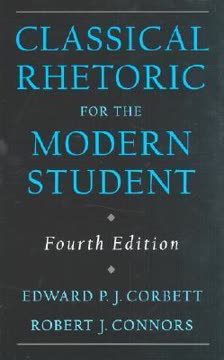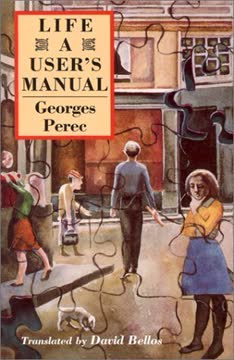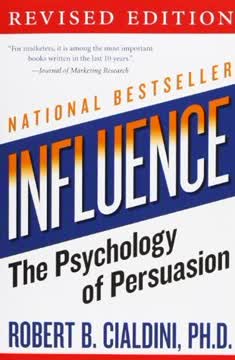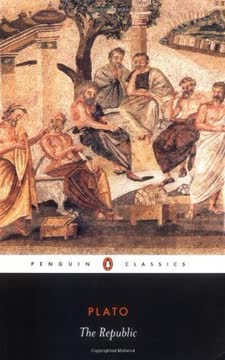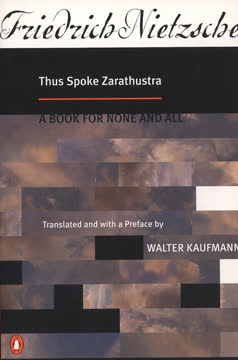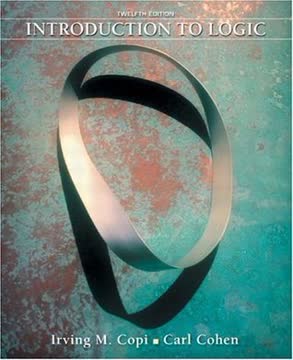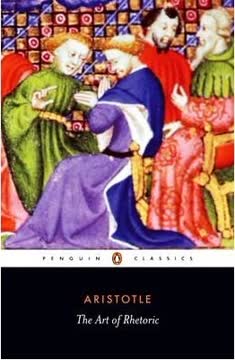Key Takeaways
1. Rhetoric: The Art of Effective Communication for Any Era
Rhetoric is not merely the art of persuasion, but the profound capacity to discern, in any given case, the available means of persuasion.
Beyond mere persuasion. Classical rhetoric, far from being a dusty academic subject, is the timeless art of effective communication. It teaches us not just how to win arguments, but how to understand and adapt our message to any situation, audience, and purpose. This foundational skill is crucial for navigating complex modern interactions, whether in business, politics, or personal life.
A practical discipline. Rooted in ancient Greece, rhetoric was considered a vital civic art, essential for citizens to participate in public life. It provided a systematic framework for crafting compelling speeches and arguments, enabling individuals to advocate for their ideas, influence public opinion, and resolve disputes. The principles developed millennia ago remain remarkably applicable today, offering a robust toolkit for anyone seeking to communicate with clarity and impact.
Universal application. From crafting a persuasive email to delivering a keynote speech, the principles of rhetoric empower individuals to articulate their thoughts, connect with others, and achieve their communication goals. It's about understanding the dynamics of human interaction and leveraging language strategically to inform, inspire, or move an audience to action. Mastering rhetoric means mastering the art of influence through thoughtful, well-constructed communication.
2. The Pillars of Persuasion: Ethos, Pathos, and Logos
True persuasion is built upon a tripod of credibility, emotion, and reason, for a message without one leg will inevitably falter.
Credibility, emotion, logic. Aristotle identified three fundamental modes of persuasion: Ethos, Pathos, and Logos. Ethos refers to the speaker's credibility and character, convincing the audience through trustworthiness and authority. Pathos appeals to the audience's emotions, evoking feelings like empathy, anger, or joy to create connection and motivate action. Logos relies on logic and reason, presenting facts, evidence, and sound arguments to persuade intellectually.
Interconnected elements. While distinct, these three pillars are rarely used in isolation; effective communication often weaves them together. A speaker might establish ethos through their expertise, then use pathos to connect emotionally with a story, and finally employ logos to present data supporting their claim. Neglecting any one pillar can weaken the overall persuasive power of a message, making it less impactful or believable.
Strategic application. Understanding when and how to emphasize each pillar is key to rhetorical success. For instance, in a scientific presentation, logos might dominate, while a charity appeal would lean heavily on pathos. A political speech, however, would likely balance all three.
- Ethos: Build trust through expertise, shared values, and good character.
- Pathos: Connect emotionally through vivid language, stories, and appeals to shared human experiences.
- Logos: Provide clear evidence, logical reasoning, and coherent arguments.
By consciously employing ethos, pathos, and logos, communicators can craft messages that resonate deeply and effectively.
3. Audience is King: Tailoring Your Message for Impact
The most profound rhetorical act begins not with what you wish to say, but with a deep understanding of who needs to hear it.
Know your audience. Effective rhetoric is inherently audience-centric. Before crafting any message, a skilled communicator meticulously analyzes their audience to understand their demographics, values, beliefs, prior knowledge, and potential biases. This deep understanding allows the speaker to tailor their language, examples, and arguments to resonate most effectively with those they aim to persuade or inform.
Adapt and connect. Failing to consider the audience is a common pitfall that leads to ineffective communication. A message that works for one group might alienate another, or simply fail to land due to irrelevant examples or an inappropriate tone. By adapting the message, the speaker can build rapport, overcome resistance, and ensure their points are not only heard but also understood and accepted.
Anticipate reactions. Audience analysis also involves anticipating potential objections, questions, or emotional responses. This foresight enables the speaker to proactively address concerns, provide necessary context, and frame their arguments in a way that minimizes friction and maximizes acceptance.
- Demographics: Age, gender, education, profession.
- Psychographics: Values, beliefs, attitudes, motivations.
- Knowledge Level: What do they already know about the topic?
- Relationship: What is your relationship with the audience?
By prioritizing audience understanding, communicators transform their message from a monologue into a meaningful dialogue, increasing its persuasive power exponentially.
4. The Five Canons: A Blueprint for Crafting Powerful Discourse
The ancient canons of rhetoric provide not a rigid formula, but a flexible framework for transforming raw ideas into compelling communication.
Systematic approach. Classical rhetoric offers a structured approach to communication through its five canons: Invention, Arrangement, Style, Memory, and Delivery. These canons represent distinct stages in the process of preparing and presenting a message, from generating ideas to delivering them effectively. They provide a comprehensive roadmap for any communicative act, ensuring thoroughness and strategic planning.
A holistic framework. Each canon addresses a critical aspect of communication, working in concert to produce a powerful and coherent message. Invention focuses on content, Arrangement on structure, Style on language, Memory on retention, and Delivery on presentation. This holistic framework ensures that no crucial element is overlooked, leading to more polished and impactful communication outcomes.
Guiding principles. For modern students, the canons serve as invaluable guiding principles, applicable to everything from writing an essay to preparing a business presentation. They encourage a methodical approach, moving from brainstorming and research to organizing thoughts, refining language, and finally, practicing for confident delivery.
- Invention (Inventio): Discovering arguments.
- Arrangement (Dispositio): Organizing arguments.
- Style (Elucutio): Choosing appropriate language.
- Memory (Memoria): Recalling the message.
- Delivery (Pronuntiatio): Presenting the message.
By internalizing these canons, communicators gain a systematic method for transforming abstract ideas into concrete, persuasive discourse.
5. Invention: Discovering and Developing Your Arguments
The true orator does not merely speak, but first delves deeply into the subject, unearthing every available means of persuasion.
Finding your arguments. Invention, or inventio, is the first and arguably most crucial canon of rhetoric, focusing on the discovery and development of arguments. It involves a systematic exploration of the topic to identify all possible lines of reasoning, evidence, and appeals that can be used to support a particular position. This stage is about thorough research, critical thinking, and creative brainstorming.
Tools for discovery. Classical rhetoricians developed "topoi" or "commonplaces" – categories of arguments that can be applied to almost any subject. These include arguments from definition, comparison, cause and effect, testimony, and circumstance. By systematically applying these topoi, a speaker can generate a wealth of material and ensure their argument is well-supported and comprehensive.
Beyond mere facts. Invention is not just about gathering facts; it's about understanding the nuances of the issue, anticipating counterarguments, and identifying the most compelling angles for your audience. It's the intellectual heavy lifting that lays the groundwork for all subsequent stages of communication.
- Definition: What is it? What are its parts?
- Comparison: How is it similar/different?
- Cause/Effect: What caused it? What are its consequences?
- Testimony: What do authorities or witnesses say?
- Circumstance: Is it possible/impossible? Has it happened before?
Mastering invention means developing a keen eye for relevant information and a strategic mind for constructing robust arguments.
6. Arrangement: Structuring Your Message for Clarity and Impact
A well-arranged discourse is like a well-built house: each part serves a purpose, leading the audience seamlessly from foundation to conclusion.
Logical flow. Arrangement, or dispositio, is the art of organizing your invented material into a coherent and impactful structure. It dictates the order in which arguments are presented, ensuring a logical flow that guides the audience through the message without confusion. A well-arranged message is easy to follow, builds momentum, and maximizes persuasive effect.
Classical structure. Traditional rhetorical arrangement often includes distinct parts: an introduction (exordium) to capture attention, a statement of facts (narratio) to provide background, a division (partitio) to outline the main points, the proof (confirmatio) presenting arguments, the refutation (refutatio) addressing counterarguments, and a conclusion (peroratio) to summarize and appeal to emotions. While not rigid, this structure provides a powerful template.
Strategic sequencing. The order of arguments can significantly influence their reception. Placing the strongest arguments first or last, or strategically refuting opposing views before they arise, are all considerations within arrangement. It's about crafting a narrative arc that leads the audience to your desired conclusion.
- Introduction (Exordium): Hook the audience, state purpose.
- Background (Narratio): Provide necessary context.
- Thesis/Outline (Partitio): State your main points.
- Proof (Confirmatio): Present your evidence and arguments.
- Refutation (Refutatio): Address counterarguments.
- Conclusion (Peroratio): Summarize, call to action, emotional appeal.
Effective arrangement transforms a collection of ideas into a compelling and persuasive journey for the audience.
7. Style: Mastering Language for Eloquence and Engagement
The power of a message lies not only in its truth, but in the elegance and precision with which that truth is articulated.
Language as art. Style, or elocutio, concerns the choice of words and figures of speech to make a message clear, engaging, and memorable. It's about more than just grammar; it involves selecting language that is appropriate for the audience, purpose, and occasion, enhancing both the aesthetic appeal and the persuasive power of the communication.
Clarity and vividness. Good style prioritizes clarity, ensuring the message is easily understood, and vividness, making it impactful and memorable. This involves using precise vocabulary, varied sentence structures, and rhetorical figures like metaphors, similes, and antithesis to add color and emphasis. The goal is to make the message not just informative, but also compelling and enjoyable to consume.
Appropriateness is key. The "grand style" might be suitable for a ceremonial speech, while a "plain style" is better for technical instructions. Rhetorical style is about finding the right voice and tone to connect with the audience and achieve the desired effect.
- Clarity: Easy to understand.
- Correctness: Grammatically sound.
- Appropriateness: Suited to audience and occasion.
- Ornamentation: Use of figures of speech (metaphor, simile, hyperbole, etc.).
- Vividness: Engaging and memorable language.
Mastering style elevates communication from mere information transfer to an art form that captivates and persuades.
8. Memory and Delivery: Bringing Your Words to Life
A brilliant argument, poorly delivered, is like a masterpiece hidden in darkness; it must be brought forth with grace and conviction to truly shine.
Recall and presentation. The canons of Memory (memoria) and Delivery (pronuntiatio) are crucial for bringing a well-invented, arranged, and styled message to life. Memory refers to the techniques used to recall the speech or message, not necessarily verbatim, but to ensure smooth and confident presentation. Delivery encompasses the vocal and physical aspects of presentation, including tone, pace, gestures, and eye contact.
Beyond the script. While modern communication often involves reading from notes or screens, the principles of memory and delivery remain vital. Memory techniques help internalize the material, allowing for more natural and engaging delivery, rather than a stiff recitation. Effective delivery ensures the speaker's presence enhances, rather than detracts from, the message.
Impactful presence. A confident posture, appropriate gestures, varied vocal tone, and genuine eye contact can significantly amplify the persuasive power of a message. These non-verbal cues build rapport, convey sincerity, and keep the audience engaged.
- Memory:
- Outline memorization
- Keyword association
- Practice and rehearsal
- Delivery:
- Vocal variety (pitch, pace, volume)
- Body language (posture, gestures)
- Eye contact
- Facial expressions
Mastering memory and delivery transforms a written text into a dynamic, living performance that truly connects with the audience.
9. Rhetoric's Enduring Relevance: From Agora to Algorithm
Though the platforms change, the fundamental human need to persuade, to inform, and to connect remains the enduring heart of rhetoric.
Timeless principles. While classical rhetoric originated in ancient public forums (the "agora"), its core principles are remarkably adaptable to the modern digital age. Whether communicating through social media, video conferences, or traditional speeches, the need to understand audience, craft compelling arguments, and present them effectively remains constant. The medium may evolve, but the art of persuasion endures.
Navigating the digital landscape. In an era of information overload and fragmented attention, rhetorical skills are more critical than ever. The ability to cut through noise, establish credibility online, and construct messages that resonate in a few characters or a short video clip is a direct application of classical rhetorical principles. Understanding ethos, pathos, and logos helps discern credible sources and craft impactful digital content.
Empowering modern communicators. From crafting viral marketing campaigns to engaging in online political discourse, the lessons of classical rhetoric provide a robust framework for success. It teaches critical analysis of messages received and strategic construction of messages sent, empowering individuals to be both discerning consumers and effective producers of information in the digital sphere.
- Social Media: Concise, impactful messaging.
- Digital Marketing: Persuasive appeals, audience targeting.
- Online Debates: Logical argumentation, refutation.
- Virtual Presentations: Engaging delivery, clear structure.
Rhetoric provides the intellectual tools to thrive in any communication environment, ancient or modern.
10. The Ethical Imperative: Responsible Rhetoric in a Complex World
The true measure of a rhetorician is not merely their ability to persuade, but their commitment to using that power for truth and the common good.
Power and responsibility. Classical rhetoric has always grappled with the ethical dimensions of persuasion. The ability to influence minds carries immense power, and with it, a profound responsibility. Ethical rhetoric prioritizes truthfulness, fairness, and the well-being of the audience and society, distinguishing itself from manipulation or deceit.
Beyond winning. While rhetoric teaches how to win arguments, it also emphasizes the importance of what one argues for and how one argues. Responsible rhetoricians consider the long-term consequences of their words, striving to foster understanding, promote justice, and contribute positively to public discourse, rather than merely seeking personal gain or short-term victories.
Cultivating integrity. In a world saturated with misinformation and divisive narratives, the ethical imperative of rhetoric is more urgent than ever. It calls for communicators to cultivate intellectual honesty, respect for diverse perspectives, and a commitment to reasoned debate. This ensures that the powerful tools of rhetoric are used to build, not to destroy, and to enlighten, not to mislead.
- Truthfulness: Presenting facts accurately.
- Fairness: Acknowledging opposing viewpoints respectfully.
- Transparency: Being clear about intentions and biases.
- Respect: Valuing the audience's intelligence and autonomy.
- Common Good: Aiming for outcomes that benefit society.
Embracing the ethical dimension of rhetoric transforms it from a mere technique into a moral art, essential for a healthy and informed society.
Last updated:
Review Summary
Classical Rhetoric for the Modern Student is highly praised as a comprehensive and valuable resource for learning rhetoric. Readers appreciate its in-depth coverage of classical techniques adapted for modern use, including invention, arrangement, and style. Many find it useful for improving writing and critical thinking skills. The book is lauded for its readability, practical exercises, and inclusion of exemplary texts. While some find it dense, most reviewers consider it an essential text for students, writers, and anyone interested in effective communication.
Similar Books
Download PDF
Download EPUB
.epub digital book format is ideal for reading ebooks on phones, tablets, and e-readers.
